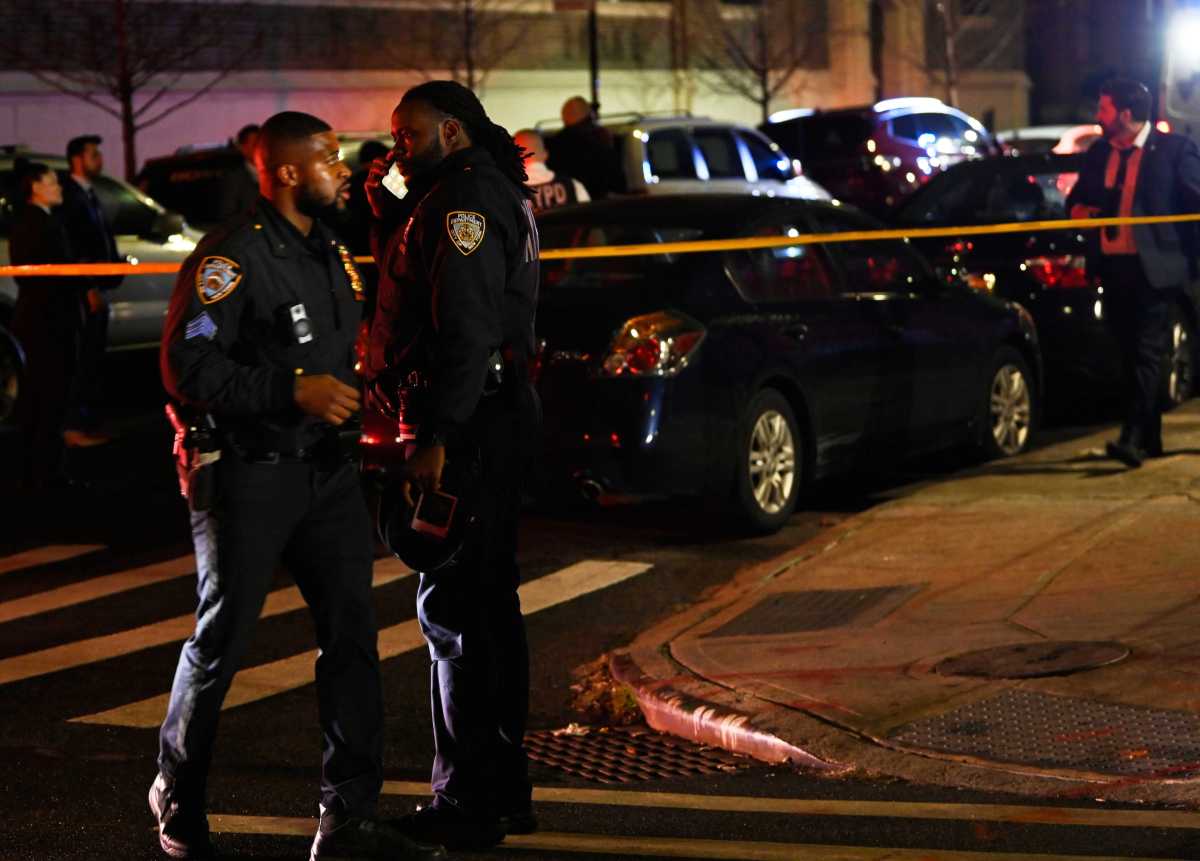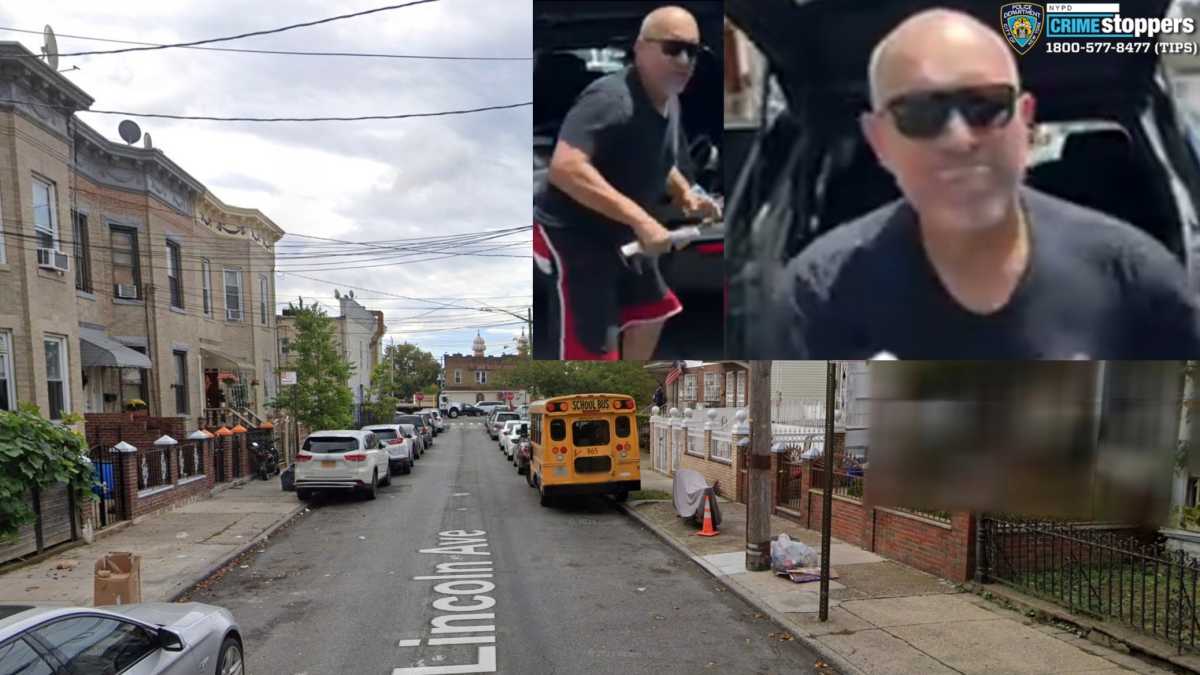Moments after the City Planning Commission voted to approve a rezoning
application by the Watchtower Bible and Tract Society that would allow
the construction of four 12- to 20-story towers to be built on the eastern
edge of DUMBO’s lower-scale warehouse district, DUMBO Neighborhood
Association director Nancy Webster cornered a representative from Brooklyn’s
City Planning office.
Feeling threatened by the prospect of such massive towers looming around
her, she inquired about her group’s push for a comprehensive contextual
rezoning of the area.
“We’d really love to be testifying on something positive at
this point,” Webster told the agency rep, who told her such an idea
was moving along — slowly.
Marcia Hillis, a DNA member and member of the Community Board 2 land use
committee, said plans for a DUMBO rezoning had been in the works since
1997, when board members and residents met for months to develop a plan
to limit zoning in certain areas.
“Even back then people saw that there was a problem with non-conforming
uses in the neighborhood,” Hillis said. “It asked for a mixed-use
zoning that brings residential use into conformity.” But the plan
never made it past CB2.
“With the precedent of 85 Jay St. it’s creating a vulture effect
— a lot of developers will swoop in,” she said, referring to
the Watchtower plan.
But, said Hillis, other large-scale projects set an equally daunting precedent.
In January 2002, the city approved plans for an 18-story luxury condominium
complex next to the Manhattan Bridge overpass at Jay and York streets.
The 375,000-square-foot Light Bridges at Jay Street passed the city’s
Uniform Land Use Review Procedure well before the current housing and
office conversion boom.
“That went through because quite honestly there was a sort of naivete
of the community members involved,” Hillis said of Light Bridges,
also noting that CB2 got the application for review just a month after
Sept. 11, 2001.
“Unfortunately, we didn’t get any design restrictions [imposed
on the developer],” said Hillis.
Light Bridges has not been built, but developer Shaya Boymelgreen is building
two high-rises in DUMBO, an 11-story luxury condominium at 84 Front St.
and a 23-story residence at 85 Adams St., almost on the direct opposite
side of the Manhattan Bridge overpass from the Light Bridges site.
And DUMBO developer David Walentas, known for converting existing industrial
buildings rather than tearing them down, was shot down last month in city
review of his plan to build a high-rise next to the Brooklyn Bridge overpass
at 38 Water St., which currently houses the St. Ann’s Warehouse performance
space.
“We’d like to push for a contextual rezoning for the neighborhood
so we’re not having older buildings torn down and high rises going
up everywhere, but also because it will have better results,” Hillis
said.
“It’s something City Planning has been doing work on for a while,”
she said Hillis.
Meanwhile, a contextual zoning plan for similarly industrial Greenpoint-Williamsburg
has just been certified and is now “in the midst of a public review
process,” said Regina Myer, City Planning’s Brooklyn director.
Myer said the DUMBO plan was in consideration.
A City Planning source said that developers looking to build in warehouse-DUMBO
have sought site-specific zoning variances, for the most part.
“Private developers have been coming in to us with applications,
and individually request zoning map changes,” the source said. “Instead
of it happening piecemeal, the community has asked us to look at the neighborhood,
and found it appropriate for a rezoning.”
Any large-scale rezoning, though, would require an Environmental Impact
Statement, and a year of review before a proposal could be certified.
“It’s very long-term,” said the source, who added that
City Planning officials were only having “preliminary meetings at
this point” with the DNA.
Borough President Marty Markowitz has emerged as a protector against the
land “vultures,” as Hillis termed opportunistic developers.
In his role in the ULURP process, the borough president recommended a
drastically shorter set of Watchtower residence towers, something the
City Planning Commission chose to ignore in approving the plan last week.
Markowitz also laid down the gauntlet with respect to Walentas and 38
Water St., saying that any structure that blocked views of the iconic
Brooklyn Bridge had no chance of being approved.
“Any proposed development must be complementary to the historic DUMBO
and Vinegar Hill neighborhoods,” Markowitz wrote in his report on
85 Jay St. report.
“A combination of contextual zoning districts that restrict height
to approximately 120 feet along Jay Street and 70 feet for the remainder
of the site would mitigate concerns. [It would] reflect the lower-density
scale of the neighborhood and balances responsible development of DUMBO
and Vinegar Hill with community preservation,” the recommendation
continued.
When 85 Jay St. comes before the City Council, sometime next month, the
lobbying efforts of local council members Letitia James and David Yassky
will likely have the greatest impact on the land use committee and then
the full council.
Both Yassky and James have been reticent to weigh in heavily one way or
the other since the City Planning vote but have indicated that they want
to see the towers lowered.

















